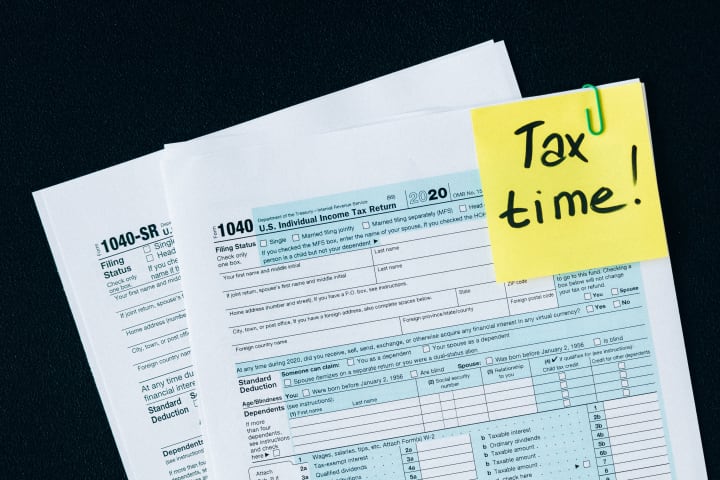
Introduction
Cryptocurrency, often simply referred to as crypto, is a digital or virtual currency that uses cryptography for security. It is decentralized, meaning it is not controlled by any government or financial institution. The most well-known cryptocurrency is Bitcoin, but there are thousands of other types of crypto in circulation today.
Cryptocurrency emerged in the wake of the 2008 financial crisis as a way to bypass traditional financial systems and provide a secure, decentralized way to transfer value. The first cryptocurrency, Bitcoin, was created in 2009 by an anonymous individual or group using the pseudonym Satoshi Nakamoto.
Since then, the use and value of cryptocurrency has grown exponentially. While it was once primarily used by tech-savvy individuals and early adopters, it is now becoming increasingly mainstream. More and more businesses are accepting crypto as a form of payment and investors are turning to it as a new asset class.
This guide is aimed at beginners who are interested in learning more about cryptocurrency and how to get started with it. We will cover the basics of crypto, including key terms and concepts, as well as provide practical advice on how to buy, store, and use cryptocurrency. We will also discuss important legal and regulatory considerations to keep in mind when using crypto.
This guide is for educational purposes only, and it is not a financial advice. The information provided in this guide is not intended to be a substitute for professional advice, and readers should always conduct their own research and seek advice from a financial advisor before making any investment decisions.
Explanation of cryptocurrency
Cryptocurrency is a digital or virtual currency that uses advanced encryption techniques, called cryptography, to secure and verify transactions as well as to control the creation of new units of a particular cryptocurrency. Unlike traditional currencies, cryptocurrencies are decentralized, meaning they are not controlled by any government or financial institution.
Cryptocurrency transactions are recorded on a public digital ledger called a blockchain. This ledger is maintained by a network of computers, called nodes, that work together to ensure the integrity and security of the blockchain. Each block on the blockchain contains a record of multiple transactions, and once a block is added to the blockchain, the information it contains is considered to be unchangeable.
Cryptocurrency operates on a peer-to-peer (P2P) network, allowing users to make transactions directly with each other without the need for a middleman, such as a bank. This allows for faster, cheaper, and more secure transactions. Transactions are verified by the nodes on the network using complex mathematical algorithms, and once a transaction is verified, it is added to the blockchain.
There are several different types of cryptocurrency, each with its own unique features and characteristics. The most well-known is Bitcoin, but there are also many other types such as Ethereum, Litecoin, Ripple, and more. Each cryptocurrency has its own blockchain and operates independently of the others.
In summary, cryptocurrency is a digital or virtual currency that is secured using cryptography and operates on a decentralized, peer-to-peer network. Transactions are recorded on a public digital ledger called a blockchain and are verified by the nodes on the network. Cryptocurrency offers a fast, cheap, and secure way to transfer value and it is becoming increasingly mainstream.
Brief history of cryptocurrency

The concept of cryptocurrency can be traced back to the late 1980s, when a group of scientists and cryptographers began exploring the potential of digital currencies. However, it wasn't until the late 2000s that the first fully-realized cryptocurrency, Bitcoin, was created.
In 2008, an anonymous individual or group using the pseudonym Satoshi Nakamoto released a white paper detailing the concept of a decentralized digital currency called Bitcoin. The following year, Nakamoto released the first version of the Bitcoin software and mined the first-ever block on the Bitcoin blockchain, known as the "genesis block."
In the early days of Bitcoin, it was primarily used by tech enthusiasts and early adopters as a way to make small, peer-to-peer transactions. However, as more people became aware of Bitcoin and its potential, the value of the currency began to rise.
In 2011, the first major cryptocurrency exchange, Mt. Gox, was launched, allowing people to buy and sell Bitcoin. This was followed by the launch of other exchanges and the creation of new cryptocurrencies, such as Litecoin and Ripple.
As the value of cryptocurrency continued to rise, it attracted the attention of investors and financial institutions. In 2013, the U.S. government ruled that Bitcoin and other cryptocurrencies were to be considered as property for tax purposes. This was followed by several other countries issuing their own regulations on cryptocurrency.
The value of Bitcoin and other cryptocurrencies reached an all-time high in December 2017, with the price of Bitcoin reaching almost $20,000. However, the value of many cryptocurrencies has since dropped, but it is still considered as an alternative way of investment.
Today, the use and value of cryptocurrency continues to grow, with more businesses and individuals recognizing the potential of this technology. It has also led to the development of new and exciting applications of blockchain technology, such as decentralized finance (DeFi) and non-fungible tokens (NFTs)
Understanding the basics of cryptocurrency

Understanding the basics of cryptocurrency can be broken down into several key concepts:
Blockchain: A blockchain is a digital ledger that records all cryptocurrency transactions. It is maintained by a network of computers, called nodes, that work together to ensure the integrity and security of the blockchain. Each block on the blockchain contains a record of multiple transactions, and once a block is added to the blockchain, the information it contains is considered to be unchangeable.
Cryptography: Cryptography is the science of secure communication and is used to secure cryptocurrency transactions. It uses advanced mathematical algorithms to encrypt and decrypt information, making it almost impossible for hackers to access or alter.
Mining: Mining is the process of adding new blocks to a blockchain. Miners use powerful computers to solve complex mathematical problems and are rewarded with new units of cryptocurrency for their efforts.
Wallet: A wallet is a digital storage location for your cryptocurrency. It can be a software or hardware wallet, and it allows you to send, receive, and store your cryptocurrency.
Transactions: Transactions are the process of transferring cryptocurrency from one wallet to another. Transactions are verified by the nodes on the network using complex mathematical algorithms, and once a transaction is verified, it is added to the blockchain.
Types of Cryptocurrency: There are several different types of cryptocurrency, each with its own unique features and characteristics. The most well-known is Bitcoin, but there are also many other types such as Ethereum, Litecoin, Ripple, and more. Each cryptocurrency has its own blockchain and operates independently of the others.
In summary, understanding the basics of cryptocurrency means understanding the technology behind it, specifically blockchain, cryptography, mining, wallet and transactions. Additionally, understanding the different types of cryptocurrency that exist and how they differ from one another is also important.
Definition of key terms (e.g. blockchain, mining, wallet)

Here are definitions of some key terms related to cryptocurrency:
Blockchain: A blockchain is a digital ledger that records all cryptocurrency transactions. It is maintained by a network of computers, called nodes, that work together to ensure the integrity and security of the blockchain. Each block on the blockchain contains a record of multiple transactions, and once a block is added to the blockchain, the information it contains is considered to be unchangeable.
Mining: Mining is the process of adding new blocks to a blockchain. Miners use powerful computers to solve complex mathematical problems and are rewarded with new units of cryptocurrency for their efforts.
Wallet: A wallet is a digital storage location for your cryptocurrency. It can be a software or hardware wallet, and it allows you to send, receive, and store your cryptocurrency.
DeFi (Decentralized Finance): Decentralized finance (DeFi) is a financial system built on blockchain technology that allows for the creation of decentralized, peer-to-peer financial services. It eliminates the need for traditional financial intermediaries, such as banks, and enables users to access financial services in a more transparent, open, and secure way.
Staking: Staking is the process of holding or "staking" a certain amount of a specific cryptocurrency in a wallet, in order to support the network and validate transactions. In return for staking, the holder is rewarded with newly minted cryptocurrency or transaction fees.
FOMO (Fear of Missing Out): FOMO is an acronym for “fear of missing out.” It refers to the feeling of anxiety that an individual experiences when they believe they are missing out on a potential gain. In the context of cryptocurrency, FOMO often refers to buying into a cryptocurrency that is experiencing a significant price increase, due to the fear of missing out on potential profits.
HODL: HODL is a term that originated from a misspelling of the word "hold" in a Bitcoin forum post in 2013. It refers to the strategy of holding onto a cryptocurrency rather than selling it, even during market fluctuations or downturns.
Bullish/Bearish: Bullish and bearish are terms used to describe the sentiment of the market. A bullish sentiment means that the market is expected to rise, while a bearish sentiment means the market is expected to fall.
This is not an exhaustive list of key terms, but it covers the most essential and common terms that you might encounter in the world of cryptocurrency.
How cryptocurrency transactions work?

Cryptocurrency transactions work by transferring ownership of digital tokens from one person or entity to another. Here is an overview of how a cryptocurrency transaction works:
The sender initiates the transaction by broadcasting a message to the network, indicating the amount of cryptocurrency they wish to send and the recipient's digital address or "public key".
The transaction is verified by the nodes on the network, which use complex mathematical algorithms to ensure that the sender has enough funds to complete the transaction and that the recipient's address is valid.
Once the transaction is verified, it is broadcast to the entire network and added to the blockchain as a new block. Each block on the blockchain contains a record of multiple transactions.
The recipient can now access the transferred funds by using their "private key" to unlock the digital address containing the funds.
The transaction is now considered to be complete and irreversible.
It is important to note that while the transactions themselves are recorded on a public blockchain, the identity of the parties involved in a transaction is kept anonymous, as each participant is identified only by their digital address or public key.
It's also worth mentioning that there are different types of cryptocurrency transactions, such as token-to-token, token-to-fiat, Token-to-crypto, and crypto-to-fiat. And each of them has their own specific process and regulations.
In summary, a cryptocurrency transaction works by transferring ownership of digital tokens from one person or entity to another, verified by the network and recorded on a public blockchain. The process is fast, secure, and decentralized, with the identity of the parties involved kept anonymous.
Types of cryptocurrency

There are many types of cryptocurrency, but they can be broadly grouped into two main categories:
Bitcoin: Bitcoin is the first and most well-known cryptocurrency. It was created in 2009 by an anonymous individual or group using the pseudonym Satoshi Nakamoto. Bitcoin operates on a decentralized, peer-to-peer network and is designed to function as a digital form of cash.
Altcoins: Altcoins are any cryptocurrency other than Bitcoin. They operate on their own blockchain and have their own unique features and characteristics. Some examples of altcoins include Ethereum, Litecoin, Ripple, and Monero.
Within these two main categories, there are several subcategories of cryptocurrency:
Bitcoin-based: There are many cryptocurrencies that are based on the same codebase as Bitcoin. They are commonly referred to as "Bitcoin forks."
Platform-based: Platform-based cryptocurrencies, such as Ethereum, provide a platform for the creation of decentralized applications and smart contracts.
Privacy-based: Privacy-based cryptocurrencies, such as Monero, are designed to provide a higher level of anonymity for users.
Stablecoins: Stablecoins are a type of cryptocurrency that are pegged to the value of a fiat currency, such as the US dollar, in order to minimize price volatility.
Non-Fungible Tokens (NFTs): Non-Fungible Tokens (NFTs) are a type of digital asset that represents ownership of a unique item or piece of content. Unlike other cryptocurrencies, which are interchangeable and identical to one another, NFTs are unique and cannot be replicated or replaced. They are typically used to represent digital art, collectibles, and other forms of digital content, such as music, videos, and virtual real estate. NFTs use blockchain technology to ensure the authenticity and ownership of the digital asset and they are stored in a digital wallet, like other crypto assets. They allow creators to monetize their work in a new way, and also allow collectors to own and trade unique digital items
Setting up a cryptocurrency wallet

Setting up a cryptocurrency wallet is an important step in getting started with cryptocurrency. Here is a step-by-step guide on how to set up a cryptocurrency wallet:
Choose a Wallet Type: There are several types of wallets to choose from, including software wallets, hardware wallets, and paper wallets. Each has its own set of pros and cons, so be sure to research and choose the one that best suits your needs.
Download or purchase: If you have chosen a software wallet, you will need to download the wallet app from the official website. If you have chosen a hardware wallet, you will need to purchase it from the official website or a authorized reseller.
Create a new wallet: Once you have the wallet software or hardware, you will need to create a new wallet by following the instructions provided by the wallet provider. This will typically involve generating a new set of private and public keys.
Make a backup: It is important to make a backup of your wallet, as it will allow you to recover your funds in case you lose your wallet or it gets stolen. Most wallets provide instructions on how to create a backup.
Secure your wallet: Keep your private key and seed phrase secure. If you are using a hardware wallet, make sure to write down the seed phrase and store it in a safe place.
Add funds to your wallet: Once your wallet is set up, you can add funds to it by sending cryptocurrency from an exchange or another wallet to the public address of your new wallet.
In summary, setting up a cryptocurrency wallet involves choosing the right type of wallet, downloading, purchasing or creating a new wallet, making a backup, securing the wallet and adding funds to it.
Buying and selling cryptocurrency

Buying and selling cryptocurrency can be done through a cryptocurrency exchange. Here is a step-by-step guide on how to buy and sell cryptocurrency:
Research: Before you start buying or selling cryptocurrency, it's important to research the different types of cryptocurrency, their features, and their potential risks and benefits.
Get a cryptocurrency exchange account: To buy and sell cryptocurrency, you will need to sign up for an account on a cryptocurrency exchange. There are many exchanges to choose from, each with their own fees, features, and supported currencies. Make sure to research and compare different exchanges before signing up.
Verify your identity: To comply with anti-money laundering (AML) and know-your-customer (KYC) regulations, most cryptocurrency exchanges require users to verify their identity. This usually involves providing a government-issued ID and a proof of address.
Add funds to your account: Once your account is set up and your identity is verified, you can add funds to your account. This can be done by linking a bank account, credit/debit card, or using a wire transfer.
Buy cryptocurrency: Once your account is funded, you can buy the cryptocurrency of your choice by placing a buy order on the exchange. The order will be filled at the current market price or at a specific price set by the user.
Sell cryptocurrency: To sell cryptocurrency, you will need to place a sell order on the exchange. The order will be filled at the current market price or at a specific price set by the user.
Withdraw funds: Once you have sold your cryptocurrency, you can withdraw the funds to your bank account or to your cryptocurrency wallet.
In summary, buying and selling cryptocurrency can be done through a cryptocurrency exchange, by signing up for an account, verifying identity, adding funds, placing buy or sell order, and withdrawing the funds.
How to store and secure your cryptocurrency?
There are several ways to store and secure your cryptocurrency:
Use a hardware wallet: This is considered one of the safest ways to store your cryptocurrency. Hardware wallets are physical devices that store your private keys offline, making them resistant to hacking.
Use a software wallet: Software wallets are digital wallets that you can use to store your cryptocurrency on your computer or mobile device. Be sure to use a reputable software wallet and always keep your computer and mobile device secure with a strong password and updated anti-virus software.
Use a paper wallet: A paper wallet is a way to store your cryptocurrency offline by printing out your private keys on a piece of paper. This method is considered secure as long as you keep the paper in a safe place and don't lose it.
Use a trusted online exchange: Some online exchanges, like Coinbase, allow you to store your cryptocurrency on their platform. While this may be convenient, it is important to remember that you do not have full control over your private keys when using an exchange.
Regardless of the method you choose, always keep in mind that the safety and security of your cryptocurrency is ultimately your responsibility. It is important to take the necessary precautions to protect your investment.
Cryptocurrency regulations and legal considerations

The regulations and legal considerations for cryptocurrency vary by country. In some countries, cryptocurrency is fully legal and regulated, while in others it is outright banned. In the United States, for example, cryptocurrency is considered a commodity and is subject to regulations by the Commodity Futures Trading Commission (CFTC) and the Securities and Exchange Commission (SEC). In other countries, like China, the use of cryptocurrency is restricted, but not outright banned.
It is important to research the laws and regulations in your own country, and to comply with any applicable laws and regulations when using, buying, selling, or trading cryptocurrency. Failure to comply with these laws and regulations can result in fines, penalties, or even criminal charges.
Additionally, it is important to consider tax implications when using cryptocurrency. In many countries, transactions made with cryptocurrency are subject to capital gains taxes and other taxes. It is important to consult with a tax professional to understand your tax obligations when using cryptocurrency.
Overall, the legal and regulatory landscape for cryptocurrency is constantly changing, so it is important to stay informed and to consult with a legal or financial professional if you have any questions or concerns.
How to comply with tax laws when using cryptocurrency?

To comply with tax laws when using cryptocurrency, it's important to:
Keep detailed records of all transactions: This includes the date, amount, and type of transaction (e.g., buying, selling, trading) as well as the value of the cryptocurrency in the currency used for the transaction.
Report all transactions on your tax return: Depending on your country tax laws, you may be required to report all transactions involving cryptocurrency on your tax return, including capital gains and losses.
Understand the tax implications of different types of transactions: Different types of transactions, such as buying goods and services, trading one cryptocurrency for another, or converting cryptocurrency to fiat currency, may have different tax implications.
Consider the tax implications of holding cryptocurrency in foreign accounts: If you hold cryptocurrency in a foreign account, you may be subject to additional taxes and reporting requirements.
Seek professional advice: It is always recommended to seek professional advice from a tax professional or accountant with experience in cryptocurrency taxes to ensure compliance with tax laws.
It's important to note that tax laws regarding cryptocurrency may vary depending on the country you reside and the laws may change over time, so it is important to stay informed and to consult with a tax professional to understand your tax obligations when using cryptocurrency.
How to protect yourself from Crypto fraud and scams?

There are several steps you can take to protect yourself from cryptocurrency fraud and scams:
Educate yourself: Stay informed about the different types of fraud and scams that exist in the cryptocurrency space. Understand how they work and what red flags to look for.
Use reputable sources: Only buy and sell cryptocurrency through reputable exchanges and platforms. Do your research and use trusted sources.
Keep your personal information private: Be cautious about sharing personal information online. Scammers may use it to steal your identity or your cryptocurrency.
Use strong passwords and two-factor authentication: Use strong, unique passwords for all your accounts and enable two-factor authentication (2FA) to add an extra layer of security.
Be wary of unsolicited offers: Be suspicious of unsolicited offers, whether they come through email, social media, or over the phone. Scammers often try to rush you into making a decision before you have a chance to think it through.
Be cautious of investing in "too good to be true" opportunities: Be skeptical of any opportunity that promises high returns with little or no risk. Most legitimate investments come with some level of risk.
Do not fall for impersonation: Be aware of impersonation, where scammers try to impersonate a well-known personality or organization to gain your trust.
Keep your software and devices up-to-date: Regularly update your software, including your operating system, anti-virus program and browser.
It's important to be vigilant and to take the necessary precautions to protect yourself from fraud and scams. Remember if something seems too good to be true, it probably is.
Future of Cryptocurrency

The future of cryptocurrency is difficult to predict, as it will depend on a variety of factors such as government regulations, technological advancements, and global economic conditions. However, there are a few potential developments that could shape the future of cryptocurrency:
Increased adoption and mainstream use: As more people and businesses begin to understand and use cryptocurrency, it is possible that it will become more widely accepted as a form of payment.
Development of new technologies: Advancements in blockchain technology, such as the use of smart contracts, could lead to new and innovative uses of cryptocurrency.
Increased regulation: Governments around the world are beginning to take notice of cryptocurrency and are starting to develop regulations to govern its use. As regulations continue to evolve, they may have a significant impact on the future of cryptocurrency.
Competition from Central Bank Digital Currencies (CBDCs): CBDCs are digital versions of fiat currency issued by central banks. If CBDCs become widely adopted, they could potentially compete with cryptocurrencies.
Use case specific adoption: Cryptocurrency may find use cases in specific industries like remittances, micropayments, and online gambling.
It's important to note that cryptocurrency is a relatively new technology, and its future is uncertain. Cryptocurrency prices and market conditions can be highly volatile, and the value of any investment in cryptocurrency can change rapidly. Cryptocurrency is a high-risk investment, and it is important to conduct thorough research and to consult with a financial professional before making any investment decisions.
Additional resources to read about cryptocurrency

Here are a few resources you can use to learn more about cryptocurrency:
Coinmarketcap: Coinmarketcap is a website that tracks the prices, market capitalization, and other data for a wide variety of cryptocurrencies. It's a great resource for getting a snapshot of the overall cryptocurrency market.
Bitcoin.org: Bitcoin.org is a website that provides information about the original cryptocurrency, Bitcoin. It includes a beginner's guide, a technical guide, and other resources to help you learn about Bitcoin.
Cryptocurrencynews.com: Cryptocurrencynews.com is a website that provides news and analysis on the cryptocurrency market. It covers a wide variety of topics, from technical analysis to regulatory developments.
Coindesk: Coindesk is a website that provides news, analysis, and research on blockchain technology and the cryptocurrency market.
The Bitcoin Whitepaper by Satoshi Nakamoto: The Bitcoin whitepaper is the original document that described the concept of Bitcoin. It's a must-read for anyone who wants to understand the basics of how Bitcoin works.
Mastering Bitcoin by Andreas M. Antonopoulos: Mastering Bitcoin is a book that provides a comprehensive introduction to the technical details of Bitcoin.
The Basics of Bitcoins and Blockchains by Antony Lewis: The Basics of Bitcoins and Blockchains is a book that provides an accessible introduction to the concepts of Bitcoin and blockchain technology.
These are just a few examples of the many resources available to help you learn more about cryptocurrency. Remember that you should always be cautious when investing in cryptocurrency and conduct thorough research before making any investment decisions.
About the Creator
Abhi
I write about anything based on my experience. Just trying to make a difference in people's life by sharing my experience. I'm a tech passionate person and use tech to make life better!






Comments
There are no comments for this story
Be the first to respond and start the conversation.